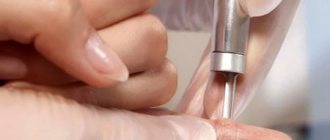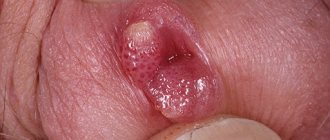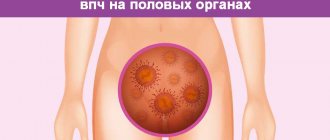Condylomas are not much different from ordinary warts. The only difference is the location in intimate places and a slight change in appearance. In men, condylomas are located on the penis, scrotum, urethra and anal area. Women also have condylomas in intimate places: the vagina, cervix, labia, clitoris and urethra. Most of them can be effectively removed with laser. Externally, condylomas most often look like thin outgrowths with or without a horny spine at the end. However, even without thorns they are traditionally called spiky. Often the outgrowths are collected into rounded nests; these nests can merge into a single genital wart.
Why do condylomas need to be removed?
The aesthetic aspect is, of course, important, but the removal of condylomas must be taken seriously, since they can develop from benign to malignant. Condylomatosis of the anogenital area causes a number of uncomfortable sensations: severe itching; burning sensation; a high percentage of the likelihood of injury followed by severe bleeding, which may result in infection of the damaged area; large condylomas can ooze, smell unpleasant, cause inflammation and irritation; Condylomas can become malignant.
There are cases when formations disappear on their own, without outside surgical or medicinal intervention. But it is important to understand that only small formations that are visualized on the skin and mucous membranes for no more than 3 months are capable of self-removal.
How much does it cost to remove condyloma with a laser?
| Consultation with a dermatologist on the day of genital wart removal using a dermatoscope up to 2 units. | 1200 RUR Sign up |
| Laser removal of genital warts, for 1 unit. | 700 RUR Sign up |
| Laser removal of multiple genital warts, session 20 min. | 4000 RUR Sign up |
| Laser removal of multiple genital warts, session 30 min. | 5000 RUR Sign up |
| Laser removal of multiple genital warts, session 40 min. | 6000 RUR Sign up |
| Laser removal of condylomas up to 3 mm, including consultation with a dermatologist, dermatoscopy and anesthesia, 3-6 pcs. | 2800 RUR Sign up |
| Laser removal of condylomas up to 3 mm, including consultation with a dermatologist, dermatoscopy and anesthesia, 7-12 pcs. | 3200 RUR Sign up |
Show all prices
Contraindications to removal of condylomas
When visiting a doctor, he carefully examines the growths and individually selects a method to eliminate such a disease as condylomatosis. The doctor takes into account the location, degree of damage, size and contraindications.
Among the contraindications it is worth noting:
- the presence of malignant tumors in the body;
- pregnancy and lactation;
- dysfunction of the endocrine system;
- photodermatosis;
- epilepsy;
- thrombocytopenia;
- increased body temperature;
- hypertension;
- presence of herpes infection;
- inflammatory processes on the skin;
- diabetes.
If the growth exceeds 6 millimeters in size, laser surgery is not recommended; in this case, electrocoagulation or surgical section is used.
If there are no contraindications, laser destruction can be performed even on children.
Symptoms of condylomatosis
Externally, condyloma is a pedunculated neoplasm that has:
- uneven bumpy surface;
- pink, flesh or brown;
- diameter from 1 mm to 2 cm.
Most often, neoplasms appear in places susceptible to injury during sexual intercourse. Small growths do not cause physical discomfort. As a rule, complaints about well-being appear as condylomas grow; in this case, the patient may experience the following symptoms:
- pain, itching and burning when the outgrowths are injured;
- increased secretion of mucous secretions from the genitals;
- unpleasant odor from intimate places;
- sensation of foreign formations in the perineal area, discomfort during physical activity and walking;
- If the urethra/rectum is affected, problems with urination/defecation may occur.
Diagnosis of the disease
Before removing genital warts, specialists at the Miracle Doctor clinic conduct not only an external examination, but also laboratory tests, which make it possible to make an accurate diagnosis and exclude concomitant diseases (herpes, STDs, etc.).
Laboratory tests This is the basis for diagnosing HPV, since external manifestations of condylomatosis may indicate other pathologies (for example, secondary signs of syphilis).
- Swab from the vagina or penis for PCR. The analysis reveals the presence of DNA sections of the virus, strains and quantity.
- Tests for syphilis and HIV. They are performed to exclude pathologies in the patient and make a correct diagnosis.
- Tests for STDs. Condylomatosis often develops against the background of sexually transmitted infections; the treatment program is developed taking into account their presence.
- Immunogram. The analysis allows us to determine the state of the immune system and the stage of development of condylomatosis.
- Oncocytology. A smear from the surface of condylomas is taken from both men and women to exclude malignancy of the neoplasm.
Biopsy of the tumor. It is carried out if precancerous conditions and oncological tumors provoked by the HPV virus are suspected. The doctor takes a section of modified tissue for histological examination in the laboratory for analysis.
Colposcopy. The procedure is carried out when pathology is detected in women during a gynecological examination and involves a detailed examination of the walls of the vagina and cervix using a special microscope. A targeted biopsy is also performed under the control of a colposcope.
Urocystoscopy. The examination is carried out if there are condylomas in the urethra. An endoscope, which is a thin flexible tube with optics and a light at the end, is inserted into the urethra and allows you not only to examine its walls, but also to perform a biopsy.
Procedure execution algorithm
Laser removal of condylomas is one of the safest and most effective procedures. Before surgery, the doctor checks the growth to see if it is benign; for this, a biopsy is prescribed. After receiving the histology results, blood tests are prescribed in order to determine the pathogen and select a comprehensive and effective drug treatment. Only after all these manipulations and in the absence of contraindications, the patient begins to be prepared for laser surgery.
The area is anesthetized and disinfected before laser therapy. The doctor sets the power, depth of exposure and beam diameter to the device. The entire procedure takes on average 40 minutes, everything directly depends on the number and size of formations.
In order to remove condylomas on the genitals, 2 procedures are needed. The second procedure is carried out at least 14 days later.
After removal, wounds form that must be carefully treated. The skin will recover within approximately 14-20 days.
Equipment
Laser in medicine comes from several types of laser devices. The most popular are diode devices. A laser beam is formed inside them, which is transmitted through a light guide over a long distance to genital warts or other neoplasms. The mechanism of action of a laser beam is the absorption of its energy by water, the instant evaporation of water (vaporization). The mechanism promotes precise impact on the areas of condylomas and eliminates heating of the healthy mucosa around them and under the condylomas. Heating healthy tissue can interfere with healing after genital wart removal and promote scarring.
Recovery period
Best materials of the month
- Coronaviruses: SARS-CoV-2 (COVID-19)
- Antibiotics for the prevention and treatment of COVID-19: how effective are they?
- The most common "office" diseases
- Does vodka kill coronavirus?
- How to stay alive on our roads?
To ensure that there are no complications after the procedure, it is strictly forbidden to wet the wounds during the day. After a crust forms on the wounds, do not wet it or rip it off; the scab falls off naturally - its mechanical removal can provoke infection with further complications.
The skin is regularly treated with antiseptics; in addition, the doctor prescribes antibiotic and immunomodulatory therapy.
All medications must be prescribed by a doctor, and the patient strictly adheres to these recommendations and prescriptions.
Additional recommendations: avoid depilation of the treated area, avoid saunas, intimate relations (if condylomas were removed from the genitals), avoid exposure to ultraviolet rays and hypothermia. It is important to follow all recommendations for at least one month, after which you need to see a doctor for control.
If the patient notices redness, inflammation, pain, itching, tingling, purulent formations, bleeding or other signs, an urgent need to consult a doctor.
The procedure for removing growths
The procedure for removing papillomas is very painful, and this is due to the presence of a large number of nerve endings in the intimate area. In most cases, a surgical operation is performed, during which local anesthesia or intravenous anesthesia is used.
Quite often, growths are removed using a laser or radio wave method, which do not cause significant discomfort. You can also get rid of growths with the help of medication, which is prescribed when you visit a doctor. We recommend contacting the Estelia innovative medicine clinic - this solution will help get rid of the pathology in a short time.
Disadvantages of laser destruction
Among the disadvantages, it is worth noting the high cost of the procedure, as well as in some cases the occurrence of side effects, such as redness, burns, skin pigmentation, fever, allergic reaction, swelling. Keloid scars may appear in patients with hormonal imbalances. But all negative symptoms usually go away within the first day.
To successfully get rid of condylomas, three factors are important: an experienced doctor, the absence of contraindications and compliance with recovery recommendations. Be healthy!
More fresh and relevant information about health on our Telegram channel. Subscribe: https://t.me/foodandhealthru
We will be grateful if you use the buttons:
Is it necessary to treat a partner for this disease in a woman?
Since perineal condylomas can occur in both sexes, patients are advised to go to a health care facility with a partner. Infection occurs by touching condylomas, so intimacy with a woman who has the human papillomavirus in her body can lead to the development of the disease in a man. In rare cases, infection can occur through household contact. For detailed advice and qualified assistance, you can contact the Estelia Innovative Medicine Clinic.
Treatment of anal warts
Perianal condylomas require immediate treatment due to the many inconveniences they cause to the patient and the likely progression of the disease. Modern specialists, along with excision of formations using various methods, simultaneously influence the patient’s immune system.
Treatment of condyloma in the anal area will be effective if you contact a specialized specialist in a timely manner and strictly follow all his recommendations. Proper influence on the immune system of a patient with condylomatosis activates the body's defenses and directs all their efforts to fight the papilloma virus.
Factors of HPV progression are:
- acute and exacerbation of chronic inflammatory diseases of the genital organs (trichomoniasis, chlamydia, mycoplasma genitalium, herpes simplex virus, etc.);
- the presence and exacerbation of systemic diseases (diabetes mellitus, systemic lupus erythematosus, thyroid disease, etc.);
- immunosuppressive therapy (for example, after organ transplantation);
- hormonal disorders;
- contraception (taking COCs for >5 years);
- smoking;
- stressful situations.
Treatment of condylomatosis at home
The main disadvantage of various destructive treatment methods is the recurrence of the disease, which varies, depending on the technique, from 20 to 50% of cases.
Imiquimod cream, commercial name Aldara, is a highly effective remedy in the fight against genital warts. This cream, when applied topically to the skin, acts as an immunomodulator, stimulating the production of interferons. This leads to a decrease and then to the disappearance of condylomas and a decrease in the amount of HPV in the tissue.
Aldara cream, available in sachets (sachets) for one-time use, is applied to condylomas and the skin near them 3 times a week before bed, and the next morning the area of application is cleaned with soap and water. Treatment continues until the condylomas disappear, on average 4 weeks, but not more than 16 weeks. When used, a local skin reaction in the form of redness (erythema) may occur. In this situation, you can pause until the reaction disappears and continue treatment. More details about the method of use are described in the instructions for the Aldara cream.
Numerous clinical studies show that imiquimod (Aldara cream) can achieve significant improvement within 8-10 weeks of use. There is a low relapse rate of 13%. Additionally, it should be noted that the drug stimulates the regeneration of the skin and improves its appearance in case of actinic (senile) keratosis.
Complications of condylomatosis
Given that both sexes are equally susceptible to condylomatosis, this disease poses a greater danger for women than for men. Benign anogenital warts (condylomas), in 90% of cases are caused by HPV types 6 and 11 and are benign. Patients with visible warts can also be infected with highly oncogenic HPV types 16 and 18, which may be flat and not visible during routine examination. These last 2 types can cause cancer of the lower reproductive organs (cervix, vagina and vulva).
Genital warts caused by HPV types 6 and 11 are benign growths. Such neoplasms are not dangerous and cannot lead to oncological degeneration. They cause a lot of inconvenience to humans and pose a danger to sexual partners due to the high probability of infection.
Experts consider flat lesions more dangerous due to the difficulty of their timely diagnosis. It is viral lesions of the flat type that can cause tissue degeneration.
Buschke-Levenshtein condyloma is a fairly rare disease. Medical science does not have accurate statistical data due to the external similarity of this formation with epidermoid cancer.
In the initial stages, giant Buschke-Levenshtein condyloma appears in the form of elements similar to papillomas, wart-like nodules and genital warts. All elements of the neoplasm grow quickly, merge together, and form a tumor with a specific wide base. The surface of such a giant condyloma is characterized by growths and vegetations. All surface elements are separated by grooves. As the tumor grows, individual parts become more pronounced, becoming superficially covered with horny scales.
This is a rare type of disease associated with HPV types 6 and 11, characterized by aggressive growth.
Giant condylomas are usually localized in the anogenital area.
Prevention
The only sure way to prevent perineal condylomas is a vaccination that protects against the papilloma virus. It is recommended to receive it before the first sexual contact - otherwise it will be ineffective if the virus has already entered the body. Prevention measures also include:
- personal hygiene;
- use of barrier contraceptives;
- regular visits to a urologist or gynecologist;
- exclusion of sexual contacts with casual partners.
By taking precautions and treating your health with care, you can avoid the occurrence of such an unpleasant disease.










